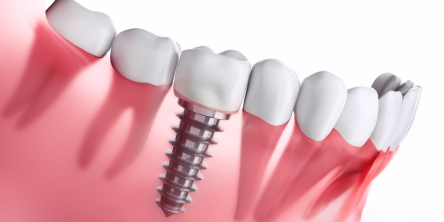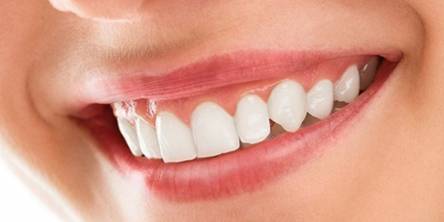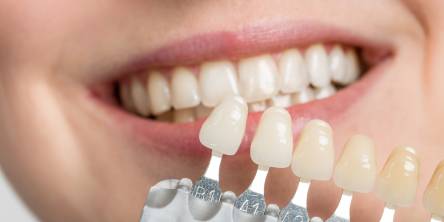9 Facts About Damon Braces That You Should Be Aware Of
Damon braces have gained popularity in orthodontic treatment because of their innovative design and efficiency in correcting tooth misalignments. While traditional braces have long been the preferred option, Damon braces provide a more comfortable and barely noticeable alternative. In this article, we will explore nine essential facts about Damon braces that you should be aware of before considering them as a treatment option.
1. Self-ligating system
Damon braces are an orthodontic system that self-ligates. Unlike typical braces, which use elastic ties to keep the wires in place, Damon braces fasten the wires via a sliding mechanism. This allows adjustment and avoids the need for frequent orthodontic appointments for tightening.
2. Shorter treatment time
Damon braces often result in a shorter entire treatment period as compared to traditional braces. The self-ligating design provides mild, continuous tooth movement, which can aid in the alignment process. While the duration of treatment varies according to individual situations, many patients report a decrease in treatment time.
3. Enhanced comfort
Damon braces are more pleasant to wear than traditional braces because they have rounded curves and a sleek shape. The lack of elastic ties also decreases friction and strain on the teeth and gums, making orthodontic treatment more comfortable.
4. Improved oral hygiene
Maintaining good dental hygiene is critical throughout orthodontic treatment, and Damon braces make this task simpler. Because there are no elastic ties to trap food particles, brushing and flossing become less complicated. This reduces the likelihood of plaque accumulation, tooth decay, and gum disease, providing better oral health during treatment.
5. Minimal adjustments are required
Traditional braces require regular adjustments to tighten the elastic ties and keep consistent pressure on the teeth. Damon braces, on the other hand, require fewer modifications since they use a self-ligating technology. This results in fewer visits to the orthodontist, which reduces annoyance and saves patients time.
6. Wide range of cases
Damon braces are adjustable and may be used to address many different kinds of orthodontic disorders, such as crowded or crooked teeth, gaps, overbites, underbites, and crossbites. Damon braces may typically provide successful and consistent treatment for mild or more severe tooth misalignments.
7. Aesthetically pleasing
Damon braces are a more aesthetically acceptable solution for people who are concerned about the look of standard metal braces. They are available in both metal and clear ceramic styles, letting patients select the type that best matches their particular requirements. The Damon ceramic braces are quite discrete, matching the natural color of the teeth.
8. Minimal discomfort
Damon braces use moderate forces and are intended to reduce pain throughout the treatment procedure. The self-ligating method eliminates the need for tightening, as well as the pressure associated with conventional braces. Damon braces are a more comfortable option for many people.
9. Retention phase
When your Damon braces treatment is over, it is critical that you use the retainers prescribed by your orthodontist. Retainers act to keep your teeth in their right place and prevent them from moving back to their original locations. To ensure long-term outcomes, the retention phase is a key aspect of the successful treatment.
The bottom line
Damon braces are a modern and effective alternative to traditional braces, making orthodontic treatment simpler, more convenient, and visually appealing. Damon braces have grown in popularity among those looking for a straighter smile because of their self-ligating mechanism, shorter treatment periods, greater convenience, and improved dental hygiene.
Whether you have minor or severe teeth misalignments, consultation with an orthodontist will help you evaluate if Damon braces are right for you. Remember that a great smile improves not only your look but also your oral health and general well-being.
Similar Articles
Most individuals have heard the term "dental crown" before. However, few people understand crown lengthening or why it is necessary. Dental crown lengthening is frequently an essential step in preparing your teeth for a dental crown.
Dentists successfully use dental sealants to prevent patients' teeth from serious deterioration in many cases. This inexpensive prophylactic medication is usually recommended for younger children, but it can also benefit adults.
Pregnancy is undoubtedly an exciting period in one's life. All expectant mothers will agree that as they find out they're expecting, they instantly begin to question if any things were previously safe but are no longer because of the baby. This is particularly true for dental operations.
Cosmetic dentistry has grown in popularity recently, allowing people to improve their smiles and confidence. Despite its rising popularity, cosmetic dentistry has become saturated with myths and misconceptions. This article will debunk the top seven myths, shedding light on the reality behind these common misconceptions.
When you lose an adult tooth, it is critical for your dental health that you replace it. If you don't, you risk teeth moving, increased oral instability, and tooth loss. It could harm the underlying bone. An endosteal implant, often known as a dental implant, is one option for restoring missing teeth.
A smile makeover is a process that improves the appearance of the smile by combining various cosmetic dental procedures, such as braces or Invisalign to correct misaligned teeth, teeth whitening to brighten up discolored teeth, and a dental crown or porcelain veneers to cover unsightly flaws like chips or discolored spots.
Dental veneers are one of the most expedient ways to achieve the bright, healthy smile of your dreams. Whether you are self-conscious about stained teeth or want to conceal a chipped tooth, veneers can provide a satisfying solution.
When you experience dental pain, you should be aware of whether you require emergency dental care and whether your dental insurance policy covers you. Not all dental disorders necessitate rapid treatment. A toothache, a damaged tooth, or pain from a dental crown are severe dental problems, but they are not always emergencies, so it is best to plan ahead of time.
Tooth decay, commonly known as dental caries or cavities, is a common oral health problem that affects people of all ages. While much has been discovered about the causes and prevention of dental decay, numerous myths still exist









